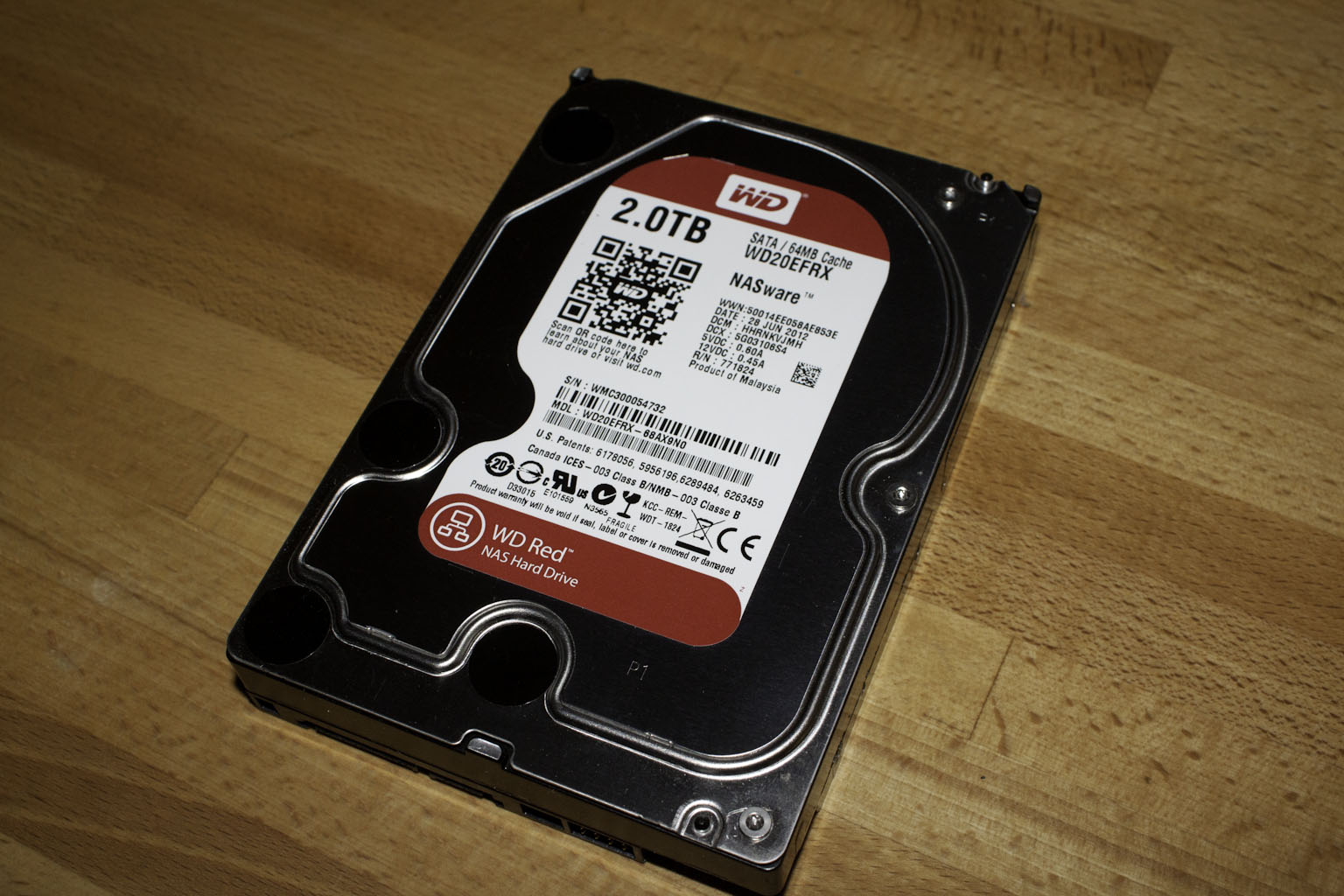The Western Digital WD-RED Drives -
The new WD Red drives are basically traditional magnetic platter media. They have the same moving parts as your average drive and use SATA 3.0 for their interface after that, things get a little more interesting in terms of how they are put together. One of the first items that we noticed when looking over the specifications of the WD Red drives was the move from DDR to DDR2 for their on-drive cache.
 |
 |
In most drives today you will find that they use DDR because of its lower latency (even though it has a slower overall speed). The move to DDR2 does bring in new technology, but we do wonder about the higher latency times versus the frequency of the memory used. Hopefully the two will not conflict.
WD has more refinements than just dropping in 64MB of DDR2. They have also adjusted the drive spin speeds through the use of a component of their firmware called Intellipower Advanced Format. This allows the drive to dynamically adjust the spindle speed for the best balance of performance and power draw. Power efficiency is one of the key features of the Red series especially as they are meant to operate in configurations where you have more than one drive in close proximity to the others. The way Western Digital sees it the more efficient the drives are the less heat they will generate and the longer their life (which makes power extremely important).
Outside of the power draw most drives also heat up due simply to friction and the moving parts that are in them. To help combat this part of the equation WD has added in their 3D Balance feature into all of their Red drives. This feature helps to keep the platters balanced during their rotation along all three axes of movement. This balancing not only helps to keep things cool, but also helps to reduce the power used (the less friction due to vibration the less power needed to spin at a certain RPM) as well as noise from the spinning platters (if you have ever heard the old 10,000 RPM SCSI Drives they could really make a racket). This balancing also helps to prevent accidental contact with the platters by the read/write heads.
All of these features combine into what WD is calling NASware. The purpose of NASware is to tailor the WD Red drives specifically to the needs of Network Attached Storage devices. WD is doing this by working to adjust the way that traditional SATA drives handle errors (they have adopted a method similar to what SAS drives use) so that you do not have a drive drop out of your RAID set due to error recovery. In addition to better error recovery they have also included features to help prevent data loss in the event of a power failure by adjusting the drive to use commit the last command in process before powering parking the heads to prevent damage to the platters. Other components of NASware include improved streaming support, Smart Command Transport, Improved seek times, improved power management support and a more accurate temperature sensing mechanism (accurate to within 1c). All of these are intended to make the WD Red drives perfect for the small and cramped enclosures that you end up with in a NAS device.
All of these are intended to make the WD Red drives perfect for the small and cramped enclosures that you end up with in a NAS device.



